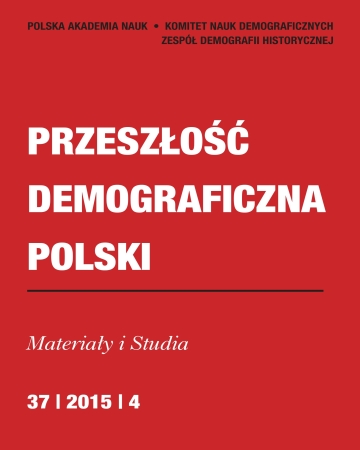Widows and widowers of Poltava in the second half of the 18th century
Widows and widowers of Poltava in the second half of the 18th century
Author(s): Yuriy VoloshynSubject(s): History, Social Sciences, Sociology, Social history, History and theory of sociology, Demography and human biology
Published by: Wydawnictwo Naukowe Uniwersytetu Szczecińskiego
Keywords: family; Hetmanate; household; Poltava; widowers; widows
Summary/Abstract: This article investigates the situation of widows and widowers in the early modern society of Hetmanate. The main source that was used are census books of Poltava, created in the period 1765−1766, during the time of so-called Rumyantsev description of Little Russia in Hetmanate (1765−1769). The article covers the main problems of widowed Poltava citizens in 1760s. Using the methods of historical demography and social anthropology, the proportion of widows and widowers in the total structure of population, topography of their settlement, age characteristics, social status, the structure of households, and their financial situation were studied.The study concludes that the proportion of widows and widowers in the marital status composition of the citizens in total was equal to the general European trend − thepercentage of widows was much higher than of widowers, widows more often than widowers lived in the central part of the city, most widows were women in the childbearing age, while widowers were usually old men.By the social affiliation, widows were usually citizens, while widowers − Cossacks. The largest micro group of Poltava widows consisted of the maids who lived in the yards of wealthy townspeople in the downtown area. The financial position of both groups was not the same. Among them, there were quite wealthy individuals, and relatively poor as well.
Journal: Przeszłość Demograficzna Polski
- Issue Year: 37/2015
- Issue No: 4
- Page Range: 39-60
- Page Count: 22
- Language: English

